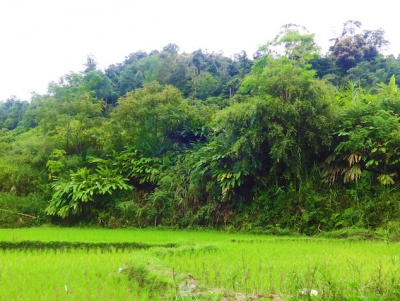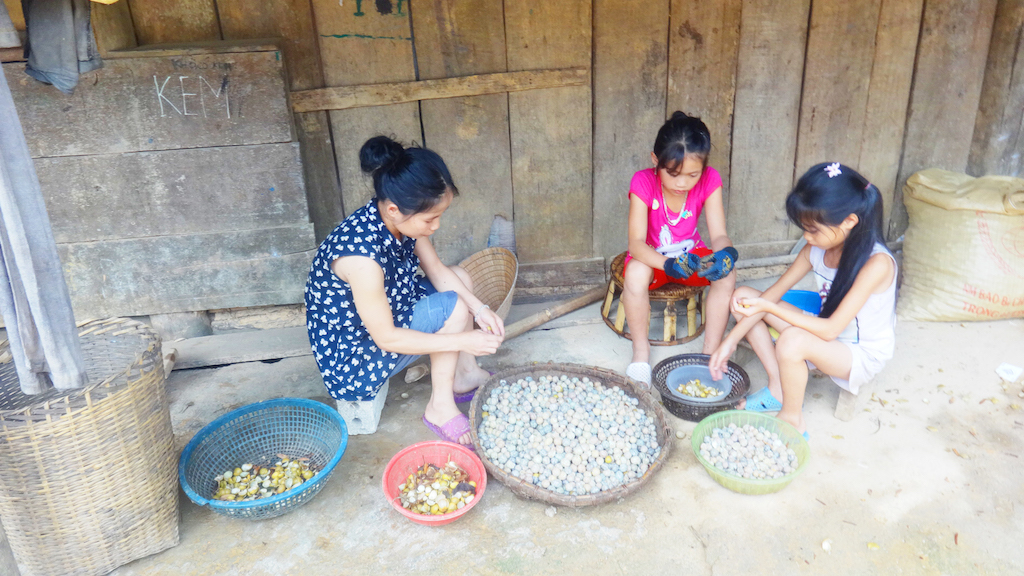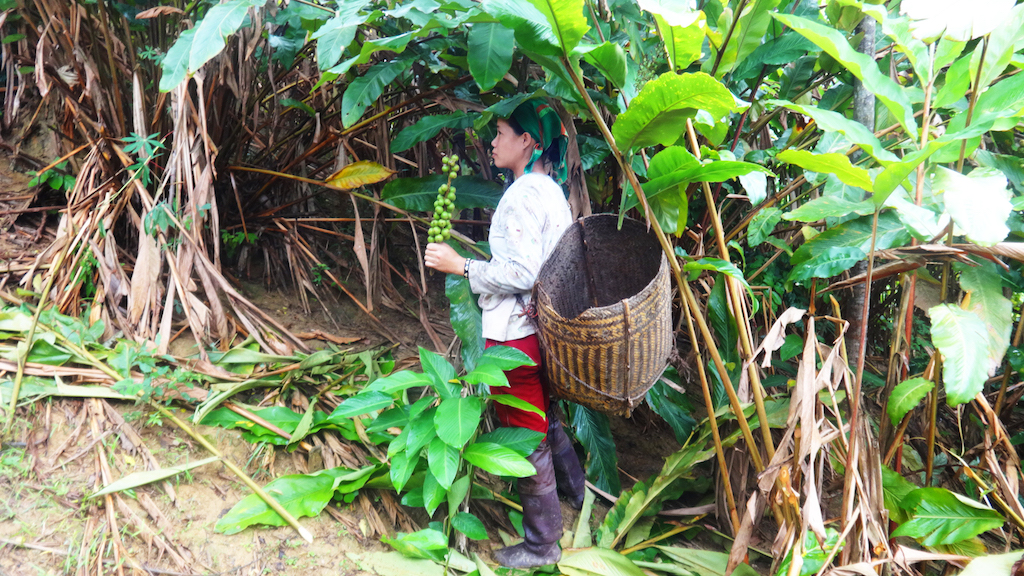Que Phong is a mountainous district northwest of Nghe An province, in Vietnam. The district consists of productive, agricultural land and is also the most forested district in Nghe An province. The highly biodiverse Pu Hoat Nature Reserve, a recognized UNESCO Biosphere Reserve, is located within the district, spanning an area of 85,770 hectares. The district is also home to a number of ethnic minorities - Thai, Kho Mu, H’Mong, and Tho people, who make up 90% of the population.
These ethnically diverse communities struggle with high rates of poverty and are dependent on the bountiful forest and the resources it provides. However, the forest is at risk due to unmanaged and illegal exploitation, and as a result, biodiversity is deteriorating in Que Phong.
The Bon Bo tree (Alpinia Blepharocalyx K. Schum) can be found in Que Phong district. This tree provides the local population with a highly valuable non-timber forest product, namely the Bon Bo seed. The Bon Bo seed is exported for use in traditional Chinese medicine, and a hectare of Bon Bo trees can generate an annual income of VND 10-20 million (US$ 440 to 880) on average. Due to the considerable profits that its harvest can generate, Bon Bo seeds are often spontaneously and aggressively exploited. The tree also has a specialized function in the forest ecosystem, protecting both the soil, water resources, and the local environment.
To secure a stable livelihood for the Que Phong ethnic minorities and to protect the forest from over exploitation, local NGO Nghe An Center for Consultation on Forestry Development (NACCFD) sought funding from the GEF Small Grants Programme (SGP), implemented by UNDP, to develop a natural forest management and conservation plan for the Bon Bo trees. With support from SGP, NACCFD developed a set of conservation models together with the communities, on the sustainable use of the Bon Bo tree. Project participants learned how to grow, plant and sustainably harvest Bon Bo seedlings, as well as how to plant and tend the trees. As a result, 14 hectares have been planted following the new tree planting model of 800 trees per hectare for economic productivity. An additional 40 hectares have been planted using the forest enriching model of 200 trees per hectare, to helps conserve and restore the forest ecosystem.
Investing in Bon Bo does not require much capital, such as the development of other agricultural crops (e.g lemon, sugarcane, rubber, etc.), and is therefore very suitable for people of limited means. The project has established the Bon Bo production and consumption cooperative group in one of the communes to help its members share information and improve knowledge and skills such as: planting, managing, protecting, exploiting, and processing Bon Bo seeds, as well as procuring Bon Bo seeds, providing material inputs to members to increase business efficiency, and innovating on production models in agriculture and forestry production.
To improve the long-term livelihoods for the participating ethnic minorities and the sustainability of the project, a revolving fund called The Bon Bo tree conservation and development fund was established. The fund is set up so that participants can borrow funds to finance initial production, and then pay back the loan with profits earned from production. This modality encourages ownership and active participation from the community. In 2016, 32 households borrowed money from the fund and planted 32 hectares of Bon Bo (800 plants/ha). In 2017, a cooperative group consisting of 24 members from the Nam Nhoong commune was established to support the members developing skills such as planting, managing, and marketing Bon Bo seeds. The cooperative members also help each other in patrolling the planted areas.
For mountainous people in Que Phong district, the project has had a significant and positive impact. Participating households went from 52 at the beginning of the project to 186. These households are protecting and managing 175 hectares of planted Bon Bo trees, which is an increase from almost zero. By planting and harvesting the Bon Bo trees, each local household can make at least 2-3 million VND (US$ 88 – 132), with an average income of 7-8 million VND (US$ 308 – 352) per household. In 2016, Nam Nhoong commune harvested 28.57 tonnes of dried Bon Bo worth a total of 1 billion VND (US$ 44 000).
The project has also been scaled up. With funding from USAID, the Vietnam Forest and Delta Project has given field training to 286 households in five villages, and continues to expand to 800 further households in 25 villages, seven communes, as part of the project framework cooperation agreement. For the period 2016-2020, the local authority has approved a project on conservation and development of medicinal plants of high economic value, of which Bon Bo is the primary species.







